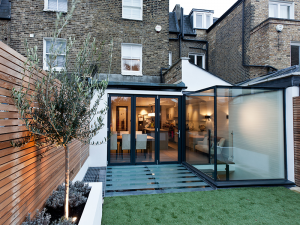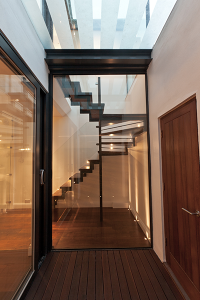Our project in Hurlingham Road was one of the first basement extensions in Fulham that Shape Architecture undertook in the borough. We have now completed and obtained planning permission for fifteen such Fulham basement extensions over the last few years. As such our portfolio of basement projects is diverse and our experience extensive. A number of our projects in other boroughs throughout London have recently reached completion. We have put together a brochure illustrating the fifteen basement projects to demonstrate our expertise in this sector and also to explain the issues and opportunities that arise in such projects. We recognise the importance of each project to our clients and hope that Shape Architecture stands out through its experience, creativity and technical know-how.
Should you wish to discuss your project, a consultation with the practice is free. Should you want to engage Shape Architecture, our fees are a fixed lump sum.
Basement projects are most successful when they exploit the use of natural light. Out project in Hurlingham Road, Fulham, contains a two storey glazed box which is the principle feature of the design and serves to bring a significant amount of daylight into both the basement level and the ground floor. A stair links the ground floor, and basement level together set within the glass box. The movement between the two spaces centres on light and views outward. The connection between the basement, ground floor and garden is an emphasised design principle.

Since building this basement in Fulham, several clients have sought to replicate the approach of incorporating a glass cube with a feature stair. In each case, we have worked around this brief by developing the design approach in different ways. In another Fulham basement extension, for example, the stair sits within the glass box in much the same way. A difference, however, can be found with a more open plan layout. In this example as soon as one enters the house, the stair and the garden beyond are especially prominent.
The basement floor plan accommodates a family room at the garden side giving onto the light well and glass cube. Ancillary spaces such as plant, utility and WC are to the heart of the plan; in these spaces, natural light is more absent. To the street side, a media room is located. It is a usual and practical layout to find the support rooms in the middle of the basement floor plan with the other more social spaces benefiting from daylight and natural ventilation at each end of the basement. We have also designed many Fulham basement extensions with a third light well in the middle of the floor plan and also a feature stair that both serve to bring daylight and views of the sky into the middle heart of the basement. In these cases, we have found success in executing these features into the living space.
At ground floor, In addition to the existing corridor, a successful feature is the incorporation of a second link between the front reception room and the garden-side kitchen and dining room. It provides views of the rear garden from the front reception room and as with other projects in Fulham, can be lined with books, or even be the head of a stair down to the basement. We have designed projects with both approaches in basement projects in Fulham.

As with many such projects, the open plan configuration is achievable through the incorporation of a sprinkler system which developed and agreed with building control complies with building regulations allowing further openness. On-site currently in St Dunstan’s Road Fulham, is another basement extension that has a glass box with stair at its heart. At St. Dunstan’s the focus is on large open plan spaces at the basement and also on ground floor. A mist system rather than sprinklers enables the execution of this design; technology is providing a solution to allow a suitable means of escape and building regulation compliance. As a practice, we ensure that we update our technical design approach to reflect such developments in technology and being a practice well known for basement extensions across London we are well integrated into a variety of professional organisations and suppliers to enable us to be at the forefront of the technical design of basements.
Access to the garden across the light well is via a structural glass platform. A ‘glass bridge’ with glass balustrading often sits over the lightwell, surrounded by voids to the basement floor below. A wider glass platform is sometimes used in combination with steel grilles, to eradicate the need for additional balustrading.
Working as architects in Fulham, the Hurlingham Road basement project contains many features that we have continued to explore and develop in subsequent projects proving a valuable example within our portfolio.


